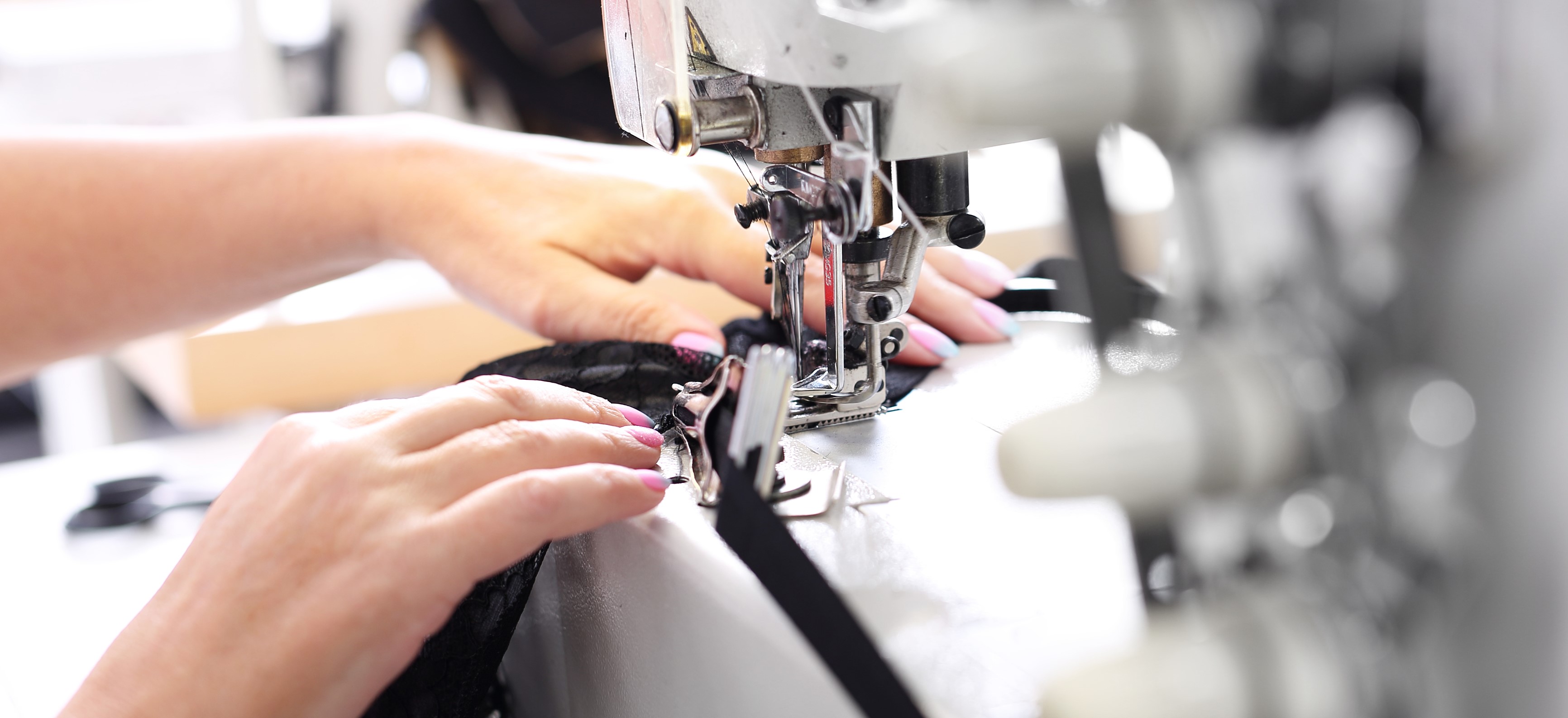Connecting the new dots

16 22
September 2027
Messegelaende HannoverGermany

The simple relationship between the needle and the thread has been at the cornerstone of the garment making industry ever since people first started to make clothing.
It still is today.
Yet new technical advances raise the very real possibility that at least one element of this relationship – human intervention – could now be removed from this long-standing equation.
Once considered far-fetched, the potential for fully automated garment assembly has been boosted by the dawn of the so-called ‘sewbots’. Developed by SoftWear Automation – an Atlanta-based sewing machinery manufacturer – this technology integrates cameras, sensors and vacuum technology to track the placement of a needle on a fabric during processing.
The technology was originally designed as a solution for the Berry Amendment, which demands that all textile goods supplied to the US military need to be made in the USA, but was also a concept picked up by European sportswear brand Adidas where its supplier Tianyuan Garments Co., plans to use sewbots to eventually make over 800,000 t-shirts per day.
Equipped with sophisticated shape recognition software with a claimed higher level of accuracy than the human eye, this technology has been tipped to revolutionise the garment making process, and help to bring clothing production much closer to the final end-customer.
As Gerd Manz, vice president of technology at Adidas, explained: “Our goal is to decentralise production and set up a global network of ‘Speed Factories’ closer to where the consumers are. This enables an information exchange in terms of different components such as production, trends, availability etc., ensuring a network of connected factories.”
Surprisingly, this fascination with robotics and artificial intelligence has grown most prominently in the country with the most manpower. China’s president Xi Jinping called for a ‘robot revolution’ in 2014, as part of the country’s ‘Made in China’ agenda. This resulted in a leap from 90,000 robotic units installed in manufacturing facilities last year, to an estimated 160,000 by 2019, according to the International Federation of Robotics.
Elsewhere, in Europe and North America, the impetus behind automation carries with it more purpose than simply improving output. The commercialisation of AI technologies holds the potential to create versatile facilities for fast fashion production that are also much closer to the customer.
A competitor, or rather a partner in this effort, Jonathon Zornow’s Sewbo, is another company leading automated garment production which differs from sewbots in that it uses patented technology and the selectively stiffening of fibres with polyvinyl alcohol, to make manipulation easier. Speaking to Fast Company, he noted: “I think that automation will be an important tool for the burgeoning reshoring movement by helping domestic factories compete with offshore factories’ lower labour costs. When automation becomes a competitive alternative, a big part of its appeal will be how many headaches it relieves for the industry.”
Already in the pipeline are other tailor-made solutions designed to cater to this emerging, automated and highly connected garment production sector.
Earlier this year, Ningbo Sunrise Apparel Machinery Co., implemented a new hanger system that uses sensors to transport garments around the factory floor for step-by-step completion. It uses these sensors to assess which worker is available to complete the task and is said to improve efficiencies by 15 per cent.
Dürkopp Adler’s recently introduced ‘QONDAC 4.0’ network solutions system is a case in point. It can map out the individual production steps of a garment in a bid to detect and notify an engineer of any disruption – reducing waste, expense and improving quality and lead times.
Elsewhere, welding continues to gain greater traction with garment components fused together via sound and heat, without the need for needles, adhesives or thread. Fewer production steps can improve a company’s environmental footprint.
Added to which, a new level of commercial thinking has also descended, which has resulted in close collaboration not just between suppliers and customers, but also between other stakeholders in the garment supply chains. One example is the recent Japanese collaboration between sewing machinery manufacturer, Juki, and zipper producer, YKK. The two companies surprised the industry by teaming up to leverage each other’s different, but complementary strengths, in a project to jointly-develop proprietary sewing technologies for zip fasteners – one of the most challenging and time-consuming processes of garment making.
This new collaboration – a claimed first for the industry – aims to develop new ways of attaching new types of fasteners to garments in a highly productive, advanced manufacturing process, expected to launch by the end of fiscal 2017.

Stealing jobs?
For some textile worker representatives, the prospect of new, highly automated technology has left a rather bitter taste in the mouth. Newspaper headlines have talked of robots stealing jobs. Reports by the International Labour Organisation (ILO) cautioned the introduction of automation in garment processing, claiming that: “nine million jobs in developing countries such as Cambodia, Indonesia, Thailand and Malaysia could be at risk”.
Yet since the introduction of highly advanced automation is likely to be limited to laborious, repetitive processes and basic products, it does also bring with it new opportunities to create more interesting, creative technical positions in the industry in these regions. As well as producing more efficient and sustainable production lines where the number of components and the associated waste is significantly reduced.
In tandem with some of the technical advances mentioned above, a theme emerges, whereby the possibility to reduce production steps and unnecessary resources is now totally plausible.
Many of these new types of innovations are still under wraps, for now, but are expected to be revealed at ITMA 2019 in Barcelona – which is where most in the textile and garment industry get first sight of new technical advances. ITMA’s garment technology exhibitors will be of interest – the basic needle and the thread will feature here, of course, but all eyes will be on the automated excellence set to guide the garment production facility of tomorrow.
In the following series of special bi-monthly blogs for the garment making sector, we will put into context how new garment production technology will impact on the sector and where manufacturers will look to exploit these innovations throughout the whole supply chain.
Subscribe to our mailing list and stay up-to-date with news and developments in ITMA and the textile and garment industry.